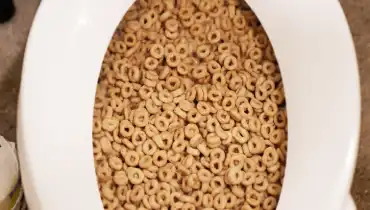Any individual has got their own individual assumption when it comes to What Can Happen If You Flush Food Down the Toilet?.

Introduction
Lots of people are frequently faced with the problem of what to do with food waste, particularly when it pertains to leftovers or scraps. One typical question that arises is whether it's okay to flush food down the toilet. In this short article, we'll delve into the reasons individuals might consider purging food, the consequences of doing so, and different techniques for correct disposal.
Reasons people could consider flushing food
Lack of understanding
Some people might not be aware of the prospective damage triggered by flushing food down the bathroom. They may incorrectly believe that it's a harmless practice.
Benefit
Flushing food down the commode might appear like a fast and simple service to disposing of undesirable scraps, particularly when there's no nearby trash bin available.
Negligence
In some cases, individuals may just choose to flush food out of large laziness, without taking into consideration the consequences of their activities.
Consequences of flushing food down the toilet
Ecological impact
Food waste that ends up in rivers can add to contamination and damage water ecosystems. Furthermore, the water utilized to purge food can stress water sources.
Plumbing issues
Flushing food can cause blocked pipes and drains, creating pricey plumbing repair work and inconveniences.
Types of food that must not be flushed
Coarse foods
Foods with fibrous textures such as celery or corn husks can obtain tangled in pipes and trigger obstructions.
Starchy foods
Starchy foods like pasta and rice can take in water and swell, resulting in clogs in pipes.
Oils and fats
Greasy foods like bacon or cooking oils need to never be purged down the bathroom as they can solidify and create blockages.
Appropriate disposal approaches for food waste
Using a garbage disposal
For homes outfitted with garbage disposals, food scraps can be ground up and flushed via the plumbing system. Nevertheless, not all foods appropriate for disposal in this fashion.
Recycling
Specific food product packaging products can be recycled, lowering waste and decreasing environmental impact.
Composting
Composting is a green means to throw away food waste. Organic materials can be composted and made use of to improve dirt for horticulture.
The value of appropriate waste management
Reducing ecological harm
Correct waste administration practices, such as composting and recycling, assistance reduce air pollution and protect natural deposits for future generations.
Securing pipes systems
By staying clear of the practice of flushing food down the toilet, home owners can avoid expensive plumbing repair services and preserve the stability of their plumbing systems.
Final thought
In conclusion, while it may be tempting to purge food down the bathroom for benefit, it is essential to comprehend the potential repercussions of this activity. By taking on appropriate waste management methods and dealing with food waste responsibly, individuals can contribute to healthier plumbing systems and a cleaner setting for all.
FLUSH FOOD DOWN THE TOILET?
FLUSHING FOOD CAN CAUSE BLOCKED DRAINS IN YOUR HOME
All of the plumbing fixtures in your home are connected to the same sewer pipe outside of your home. This outdoor sewer pipe is responsible for transporting all the wastewater from your home to the Council sewer mains. Even small pieces of food that go down the kitchen sink can cause problems for your sewer. It should therefore be obvious that flushing larger bits of food, such as meat, risks a clog in either the toilet itself or the sewer pipes. Flushing greasy food is even more problematic because oil coagulates when it cools, coating the interior lining of your pipes.
THE TOILET IS NOT A BIN
Food isn’t the only thing that people shouldn’t be flushing down the toilet. People use the toilet to dispose of all kinds of things such as tampons, makeup wipes, dental floss, kitty litter and even underwear. Water goes to great lengths to educate residents about the high costs and stress placed on wastewater treatment systems simply from people flushing the wrong stuff down the toilet. It costs taxpayers millions of dollars each year, and homeowners thousands in blocked drain repairs.
FLUSHING FOOD IS A WASTE OF WATER
Flushing food is a waste of our most precious resource - water. In June this year Level 1 water restrictions were introduced to protect water supply from drought conditions. Much of New South Wales continues to be affected by prolonged drought with recent figures revealing up to 97 per cent of the state remains in drought. Depending on whether you have a single or dual flush toilet, every single flush uses between five and 11 litres of water. In the current climate this is a huge amount of water to be wasting on flushing food that should be placed in the bin (or better yet, the compost).
https://www.jabplumbingsolutions.com.au/blog/can-you-flush-food-down-the-toilet

As a person who reads about Think Twice Before Flushing Food Down Your Toilet, I thought sharing that piece was a good idea. For those who liked our blog posting please remember to share it. Thanks for going through it.
About This